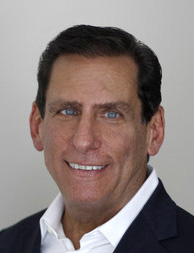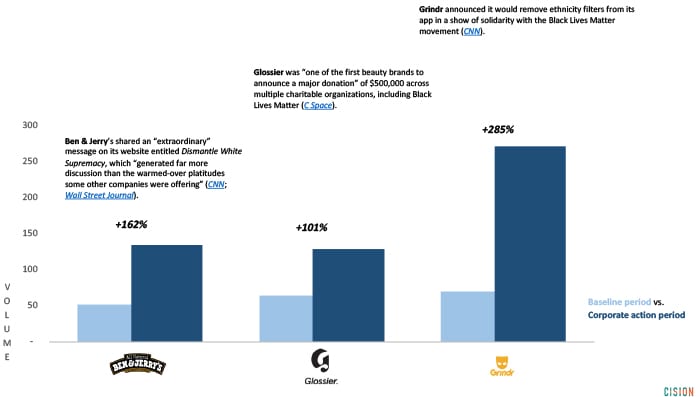
In August 2019, Business Roundtable released a statement on the purpose of a corporation (see PRNEWS, September, 2019). More than 180 CEOs, some from America’s largest firms, committed their companies to benefit not only stockholders, but all stakeholders, including customers, employees and society at large.
Events have tested the CEOs’ resolve. Last month in PRNEWS, we explored how communication research offers guidance for PR. It helps decide ‘What’s appropriate to say?’ and ‘When is the appropriate time to say it?’ In this edition, we look at the PR implications of corporate actions in response to George Floyd’s killing and the protests that followed.
Companies and Brands Respond
Some organizations chose to play it safe; they stayed silent. However, stakeholders expect corporations to play a role in improving the world. Saying nothing speaks loudly in times like these.
To mitigate risk associated with meeting the challenges of addressing sensitive topics like racism, sexism and other injustices, some intrepid companies use research to ask questions, test hypotheses, assess their position and manage the difficult conversations into which they’re entering.
In Forbes (June 4), David Hessekiel identified 55 companies and what they did in response to the Floyd killing. The list does not include every company that acted. And not all the companies received positive coverage. Some generated media notices that were critical.
To assess public reaction, Cision Insights communications research consultant Kyle Heatherly conducted a content analysis of the 55 companies. Heatherly compared the media’s treatment the month before and the week following the May 25 event to assess the impact of their statements. Content analysis is a rigorous form of communication research that uniquely and simultaneously reflects–and helps to shape–public opinion.

Research Findings
Across all companies and brands, the most common actions included issuing statements, sending donations and making product or programmatic changes.
Among the companies that generated the most positive media attention were Twitter, Snapchat, ViacomCBS and Grindr. In the weeks following the Forbes article, subsequent actions from a number of companies, notably PepsiCo and Mars, Inc., which announced changes to the Aunt Jemima and Uncle Ben’s brands, respectively, generated significant attention but are not included here due to the date range of the analysis.
Among more ubiquitous brands shown in the chart above, statements and actions may not have generated such dramatic increases in journalistic interest. Visibility is not always the primary motive in corporate social responsibility. Doing good often overrides the desire for publicity under these circumstances.
Still, visible brands like Starbucks, Nike and Bank of America generated significant increases despite a relatively high level of media attention over the course of business that preceded the protests.
Analysis reveals that companies generate media attention with a strong, unequivocal position on social issues when their statements and actions are compelling to the media. More important, organizations fare well when their words and deeds are credible.
For example, Ben & Jerry’s, a brand well-known for social activism, issued a forceful statement. Entitled “Dismantle White Supremacy,” it generated a very positive response on CNN and The Wall Street Journal.
The content analysis also uncovered the importance of proportion in the actions of certain companies. A donation of $10 million is perceived differently when the gift comes from a $200 million company versus a $70 billion enterprise.
CEOs at many companies facing public scrutiny spoke directly to stakeholders through traditional and social media outlets about issues related to race and racism.
Leaders from organizations such as Novartis, AARP, Cigna, Deloitte, Columbia University, Nike, Stanford University, United Airlines, Kroger Co., Salesforce, PayPal, 3, and numerous others used their LinkedIn profiles to share notes with clients, employees and others about how they are taking action for racial justice and equality.

Implications and Guidance
For professional communicators, the research offers guidance for the future. Brands do better when they:
- Conduct research to quickly pretest messages and activities to mitigate potential risk.
- Get out first (but get it right).
- Communicate in a voice that is authentic and credible based on current and past positions and actions.
- Make their CEOs the spokesperson in chief on sensitive matters of injustice (assuming the CEO is comfortable in that position).
- Support their positions and words through action.
- Respond with actions that are proportionate to the company’s or brand’s position.
As PR practitioners, we must exhibit courage in the questions we ask, as well as in how we listen. Suspend conventional wisdom, soften the impulse to respond emotionally and take time to deliberate and consider alternative perspectives before acting. Leaders must be careful in the words they use, but must not let fear replace curiosity and a desire to learn. Do your research. Ask questions. Listen to the answers. Then begin, persevere and improve.
CONTACT: [email protected]
